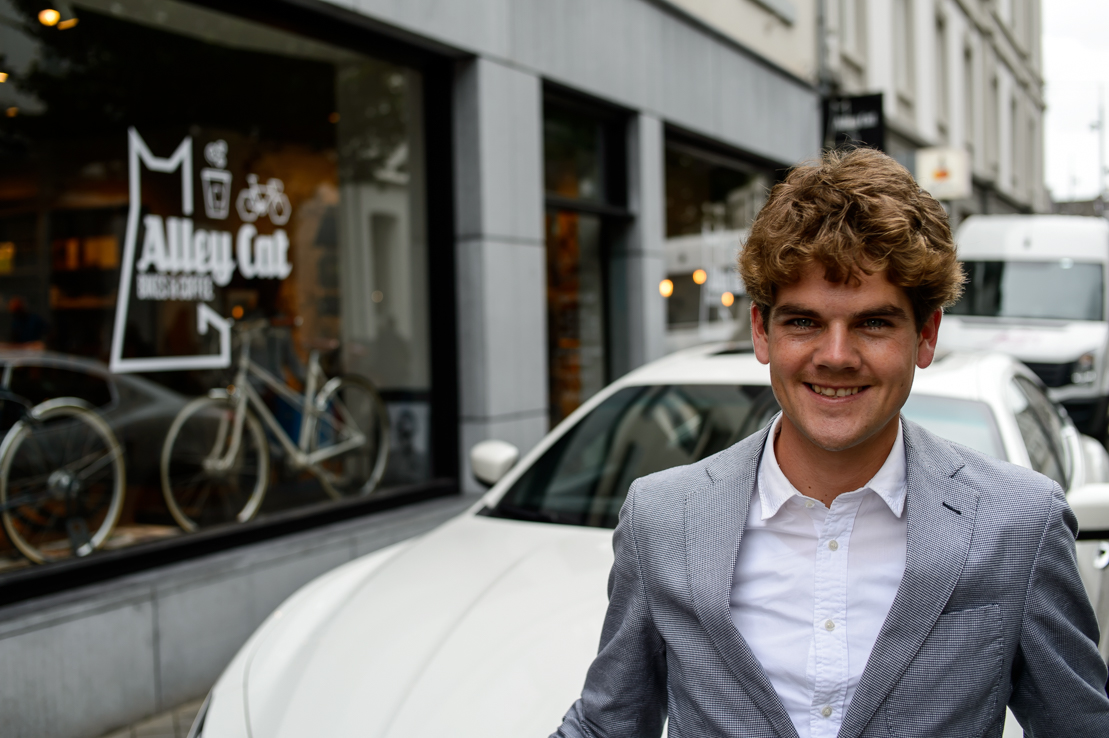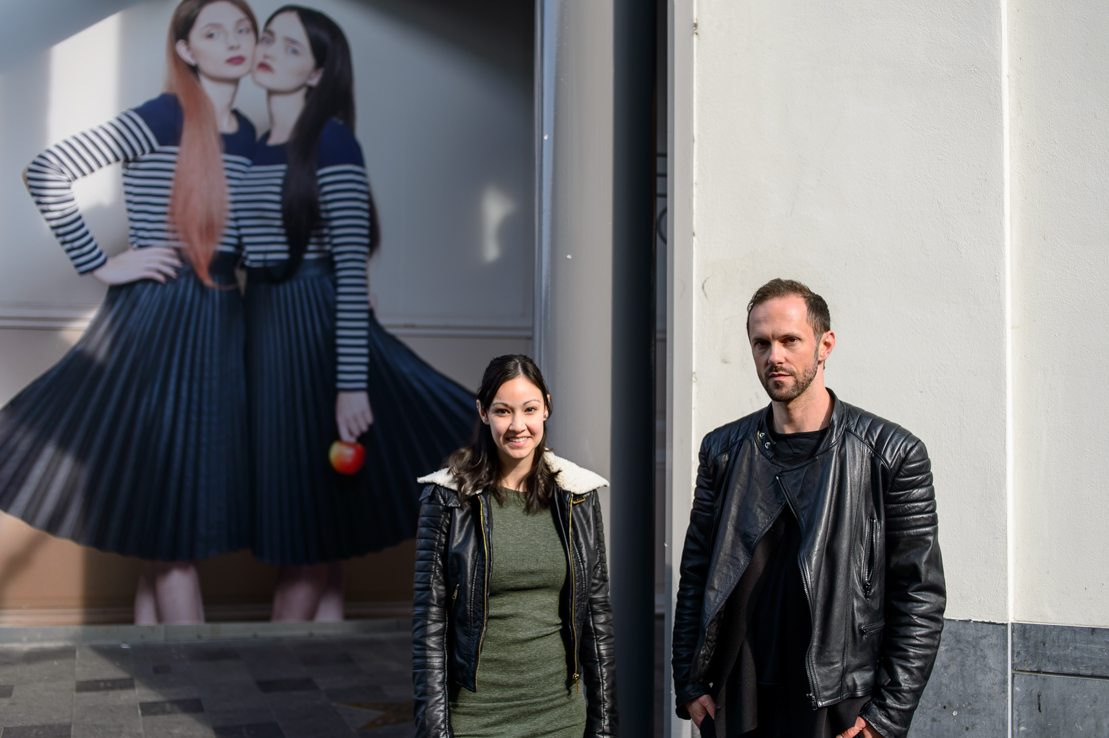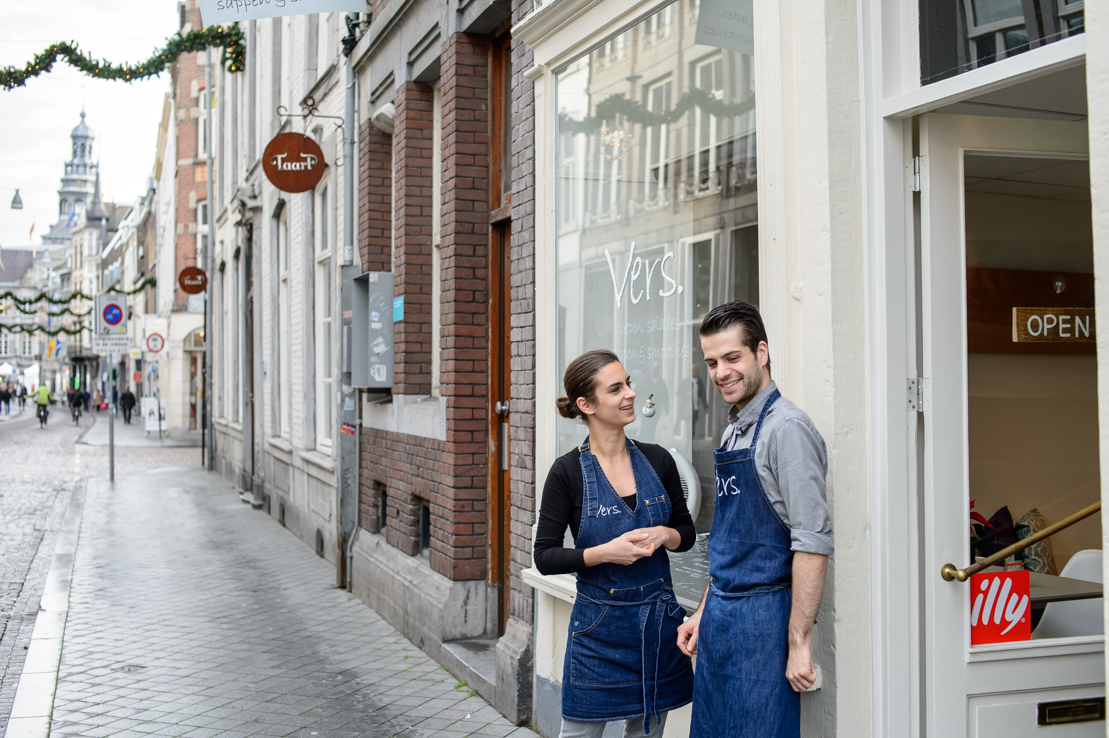1903 Tour de France with Keir Plaice

Keir Plaice, a former semi-professional cyclist and 3rd year Bachelor Arts and Culture student, is embarking on a cycling ride of a lifetime. He is riding the route of the original Tour de France of 1903 and documenting his experience in his Le Grand Tour column in the cycling magazine Soigneur. Read on to find out more about Keir and his project!
Tell us about yourself.
I came to the Netherlands to race bikes for a Dutch cycling team in the summer of 2010. I’d rode for two years before that as a semi-professional cyclist in Canada. I wanted to try and make it to the very top of the sport, ride the Tour de France and the World Tour, but after a couple of years I realised that it wasn’t going to happen. I also met a Dutch girl that bound me to the country.

Why Maastricht?
After my cycling career, I realised that I better go to school and start a future outside of cycling. I’ve always loved reading. I really love literature and arts. I love going to museums and experiencing paintings. I decided that when I go to university I would study something purely out of interest and immerse myself in something I’m really interested in. I wanted to study something to do with art and literature in English. My choice was Maastricht or Groningen. Maastricht is a much more beautiful city than Groningen, especially if you’re a cyclist.
How do you experience combining your study with your other interests?
When I decided start university, I decided that that would be my first priority. At the same time, whenever I had the free time I would go for a bike ride. I find that they really complement each other. I think lots of people who are very ambitious with school get completely caught up with university. When I go on my bike, I don’t take my phone, I don’t take anything. You just have a couple of hours in the countryside where it completely clears your head and it re-adjusts your priorities. It really helps you when you’re studying cos you’re not stressed about things.
How did you start journalism?
When I was racing, I started keeping a blog mostly to let friends and family know how the races are going. After a while, I got bored saying the race grew hard after 25 km, I was in the second group, I suffered all day but finished 30th. So then I became more interested in conveying the experience of racing through words. Bike racing is something I was completely in love with and I thought it was a cool exciting, interesting experience but anytime you read anything in the newspaper or magazine, it just states the result. None of the experience is conveyed in the stories you read about it. I found that a real shame.
The cycling magazine Soigneur somehow found my blog and they really liked my writing and got in touch. I’ve been able to do several really interesting projects with them.



Tell us about your project.
The project started early this year when Soigneur asked me for any cool ideas. As a cyclist, of course, the big dream for everybody is riding the Tour de France. It’s the holy grail for every bike racer. It was something I had always wanted to do. It was an idea where I could give a conclusion to my own cycling story, to have my own Tour de France. I’ve always known that the early Tour de France was really interesting. At that time the sport was just beginning
At the same time, I’ve always known that the early Tours were really interesting. Back then, it was completely new. Someone just had an idea of ‘hey, let’s race in France’ and the idea just took off. Now, it’s all very organised and it’s the same every year. The stages of the early Tour de France were also much longer so there was a more adventurous approach towards the sport as opposed to the racing today. It’s impressive what the guys racing in the Tour can do today, but at the same time, every aspect of their lives is completely controlled. Because it’s so competitive and everyone is so good, there’s absolutely no room for error.
So you miss some of those crazy stories of what used to happen where the guys would go for a 120km long breakaways, stopping for ice cream, pull over at a bar on the side of the road because they didn’t have enough water, hiding behind the bushes and let the peloton or whatever was left still think there were someone in front. Because it wasn’t at this super high-end top of the sport, of course, they were still very competitive, they had a lot of freedom.
What’s the plan?
I will ride the original route of the first Tour de France in 1903. So there are 6 stages, each between 270-470km. In total, it’s about 2500km. It’s basically the same programme as what they rode in 1903. Each of the stages is will be ridden in one shot. I’ll wake up at 4 ‘o clock in the morning and grab my bike and finish it. In between the stages, there are two or three rest days. There is a Maserati car riding with me for food, drinks, repairs and spare parts.

How did you prepare?
Apart from my regular riding of about 15 hours per week, I made sure to do a few longer drive of 200-250km range. A couple weeks ago I went to Norway to ride a really big race there called the Styrkeprøven. It’s 540km from Trondheim to Oslo. That was twice as far as I’d ever ridden in my life. I surprised myself and finished second place at 14 hours and 10 minutes.
Follow Keir’s journey through France in the Soigneur magazine and the Maserati Cycling youtube channel and relive the first Tour de France! Watch Keir conquer the first stage of the Le Grand Tour from Paris to Lyon:
About the author

I'm Karissa Atienza, a Filipino public policy master’s student at Maastricht University/United Nations University. This is my fourth year in Maastricht as I also did my Bachelors here on European Studies. I have been a social media reporter for Maastricht University since 2015. When not busy with academic or university work, I enjoy eating, travelling and photography. Any ideas, comments or recommendations for our social media channels? Send me a message!
Other blogs:
Also read
-
Every year since 2009, fashionistas descend to Maastricht as the city hosts the FASHIONCLASH Festival. It has attracted more than 900 talents from 50 different countries. This year’s 8th edition is bigger and better, involving more than 150 designers and artists from all over the world who will...
-
In a few weeks, Maastricht will play host to the vibrant WE Festival. But what is it? This week we met with Alexandra Frank. A third-year Arts and Culture student, she has been involved with the annual WE Festival since her first year and currently leads its programme committee. Read on to hear more...
-
Maastricht is well known for its historical city centre, shopping, hilly surroundings, and gastronomical cuisine. However, since the foundation of the University of Maastricht, a younger, more international generation has entered the stage. Inevitably, these new inhabitants have an impact on the...


